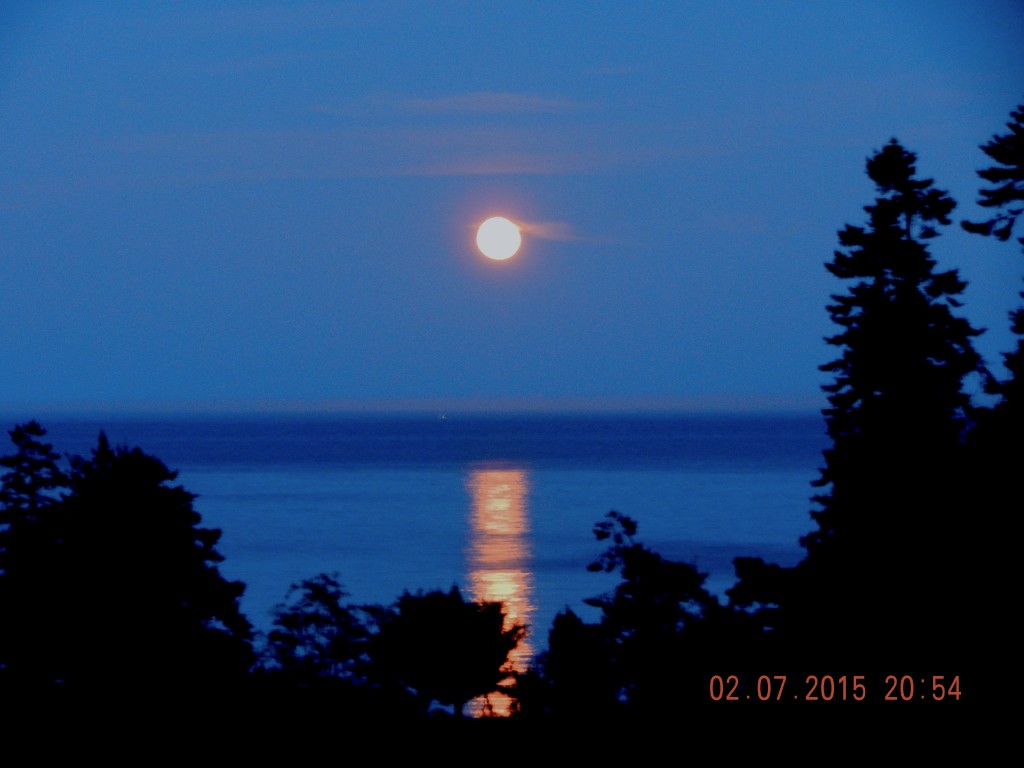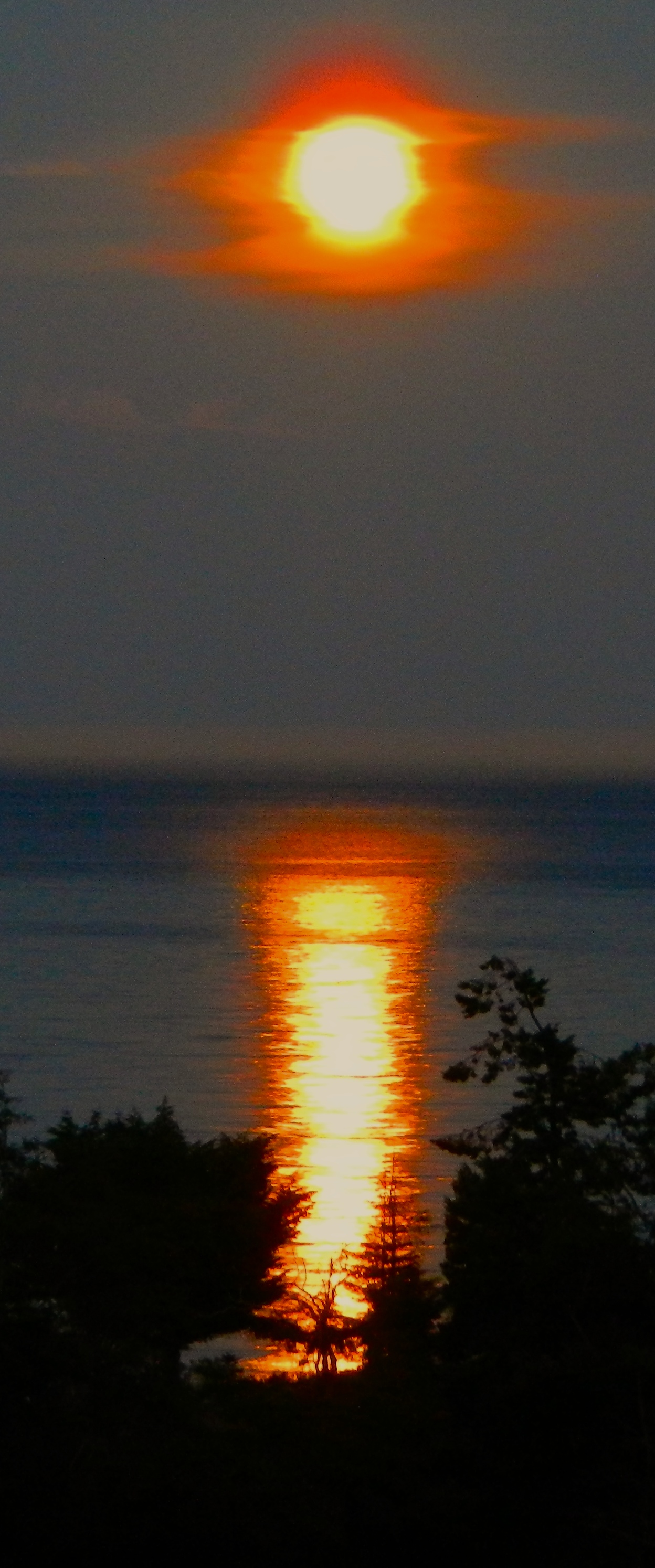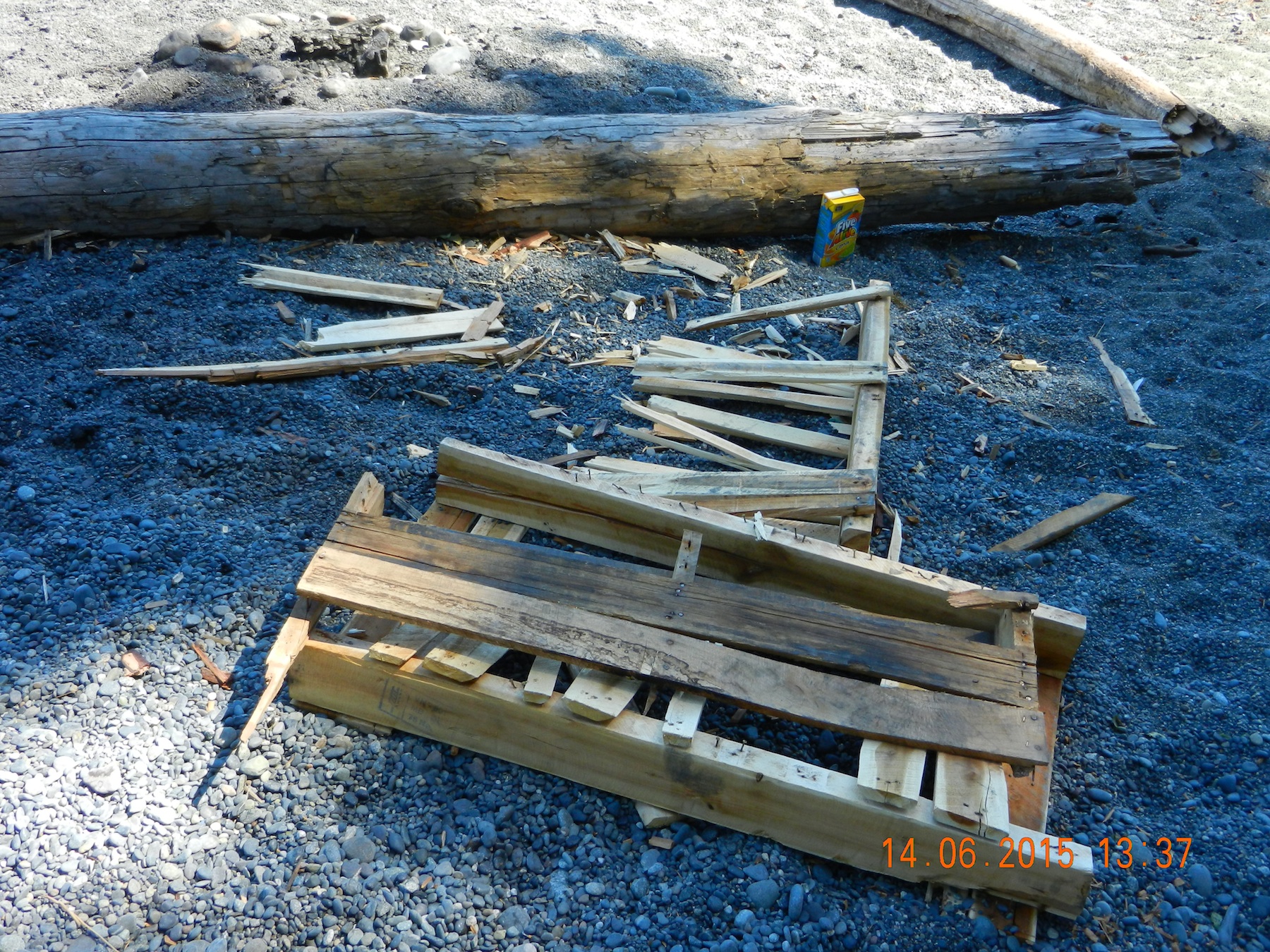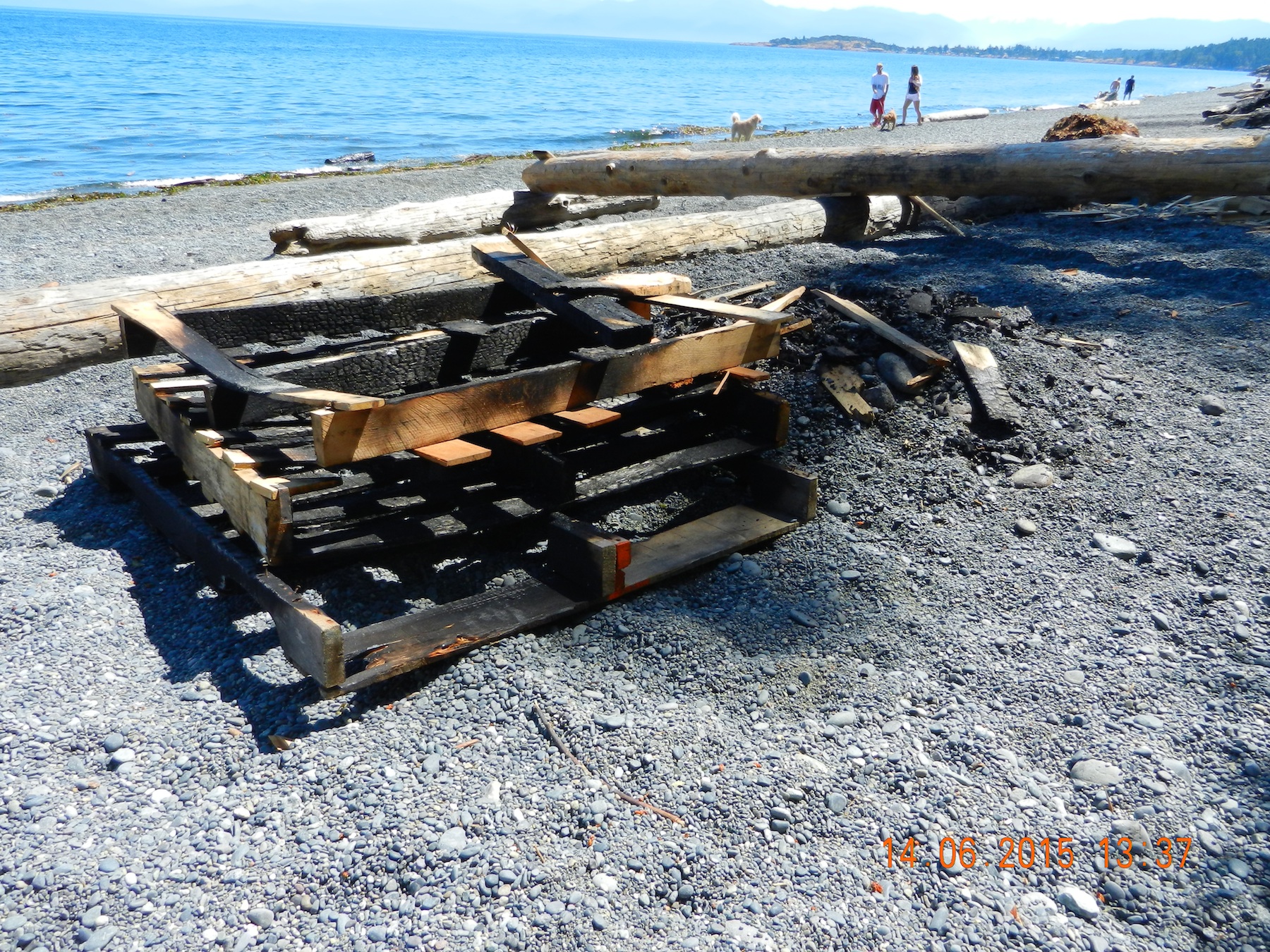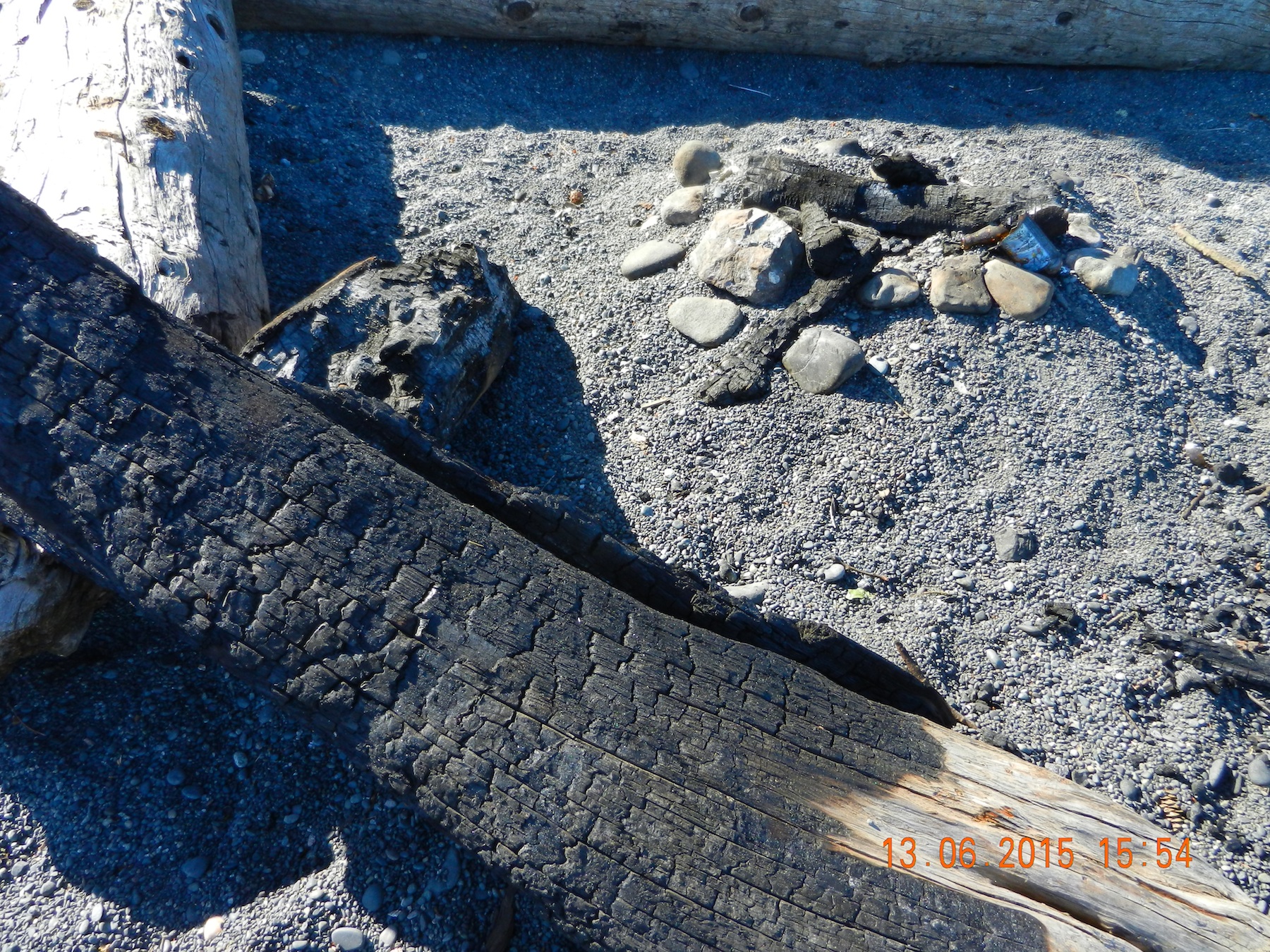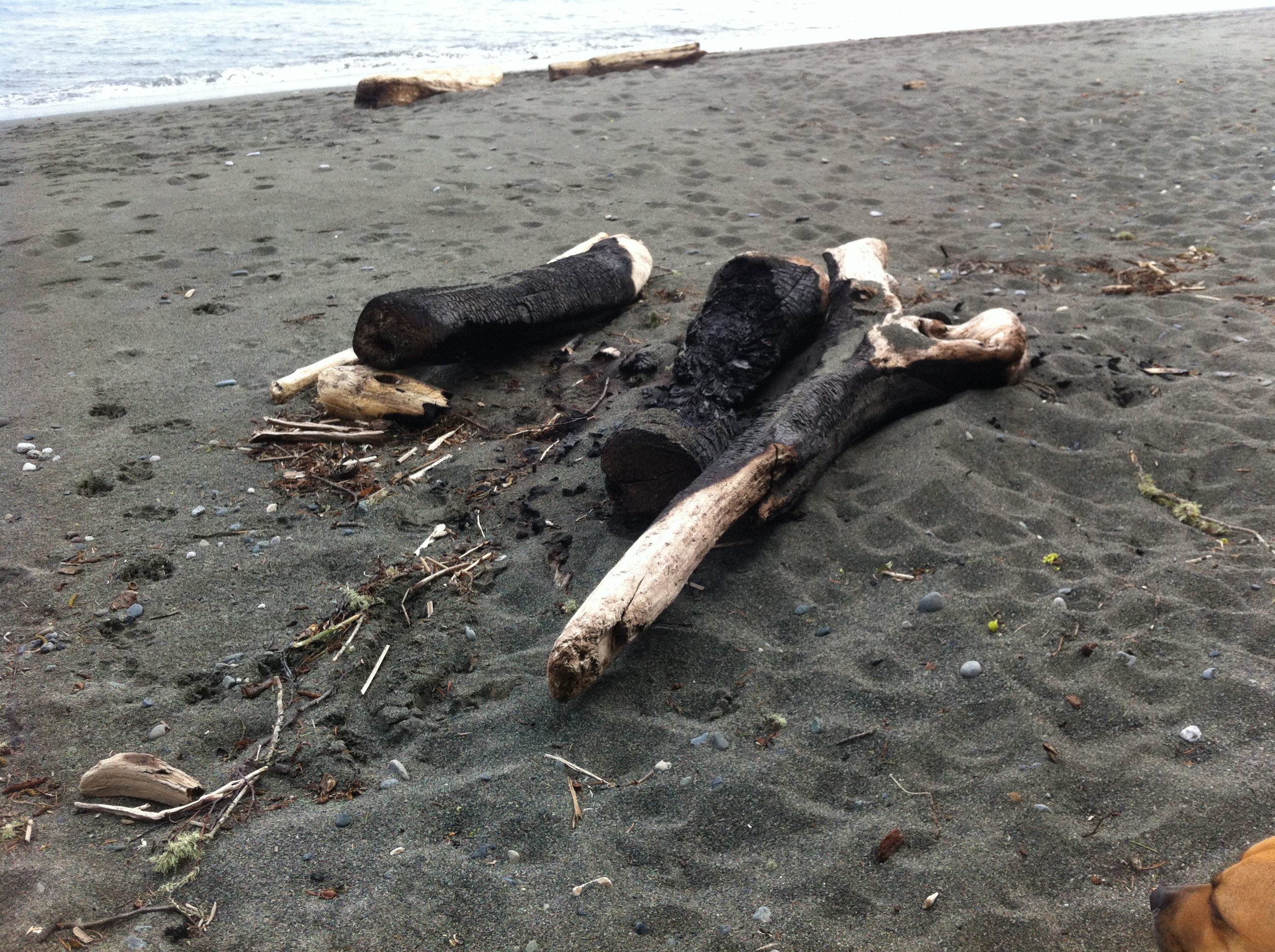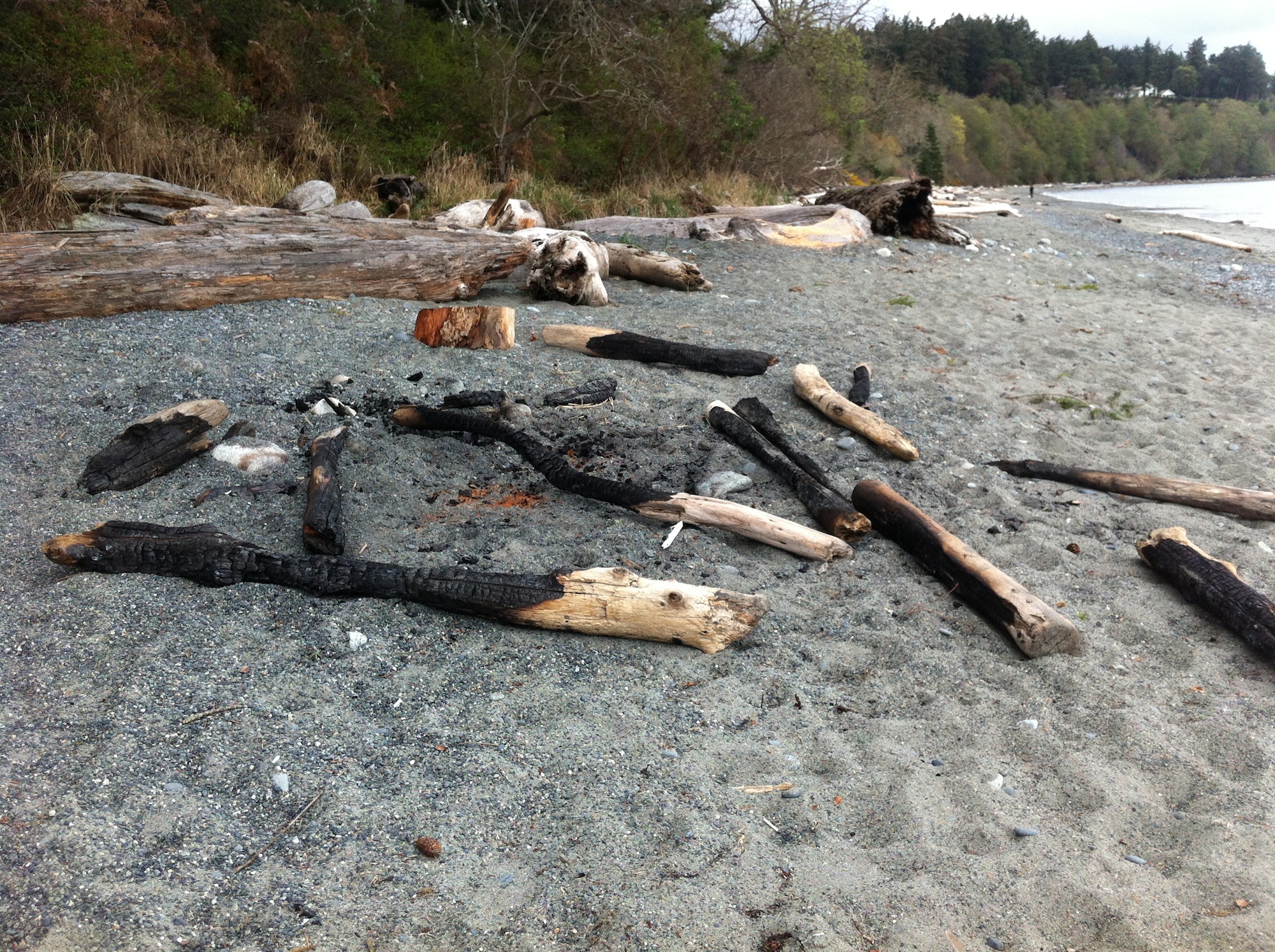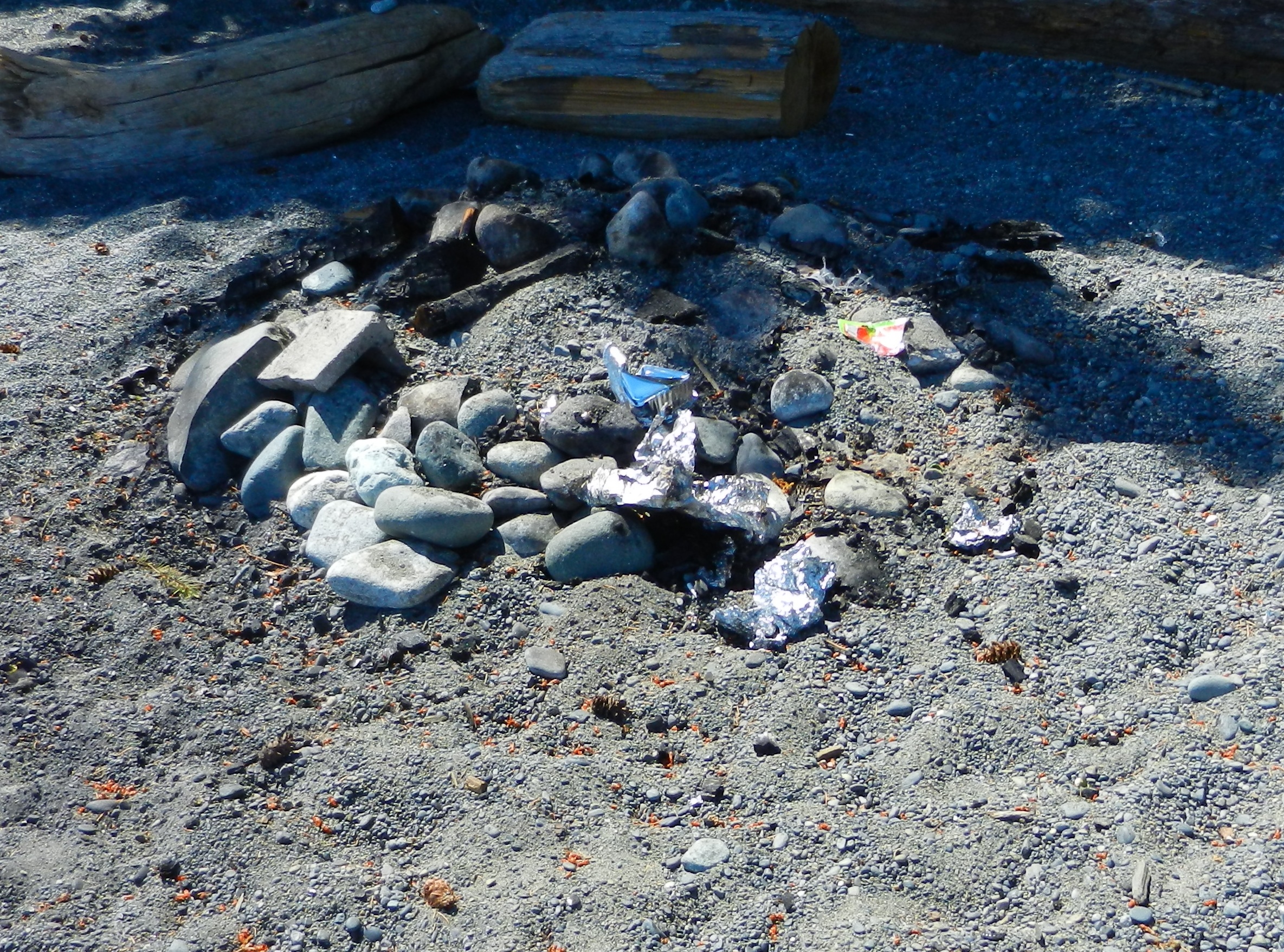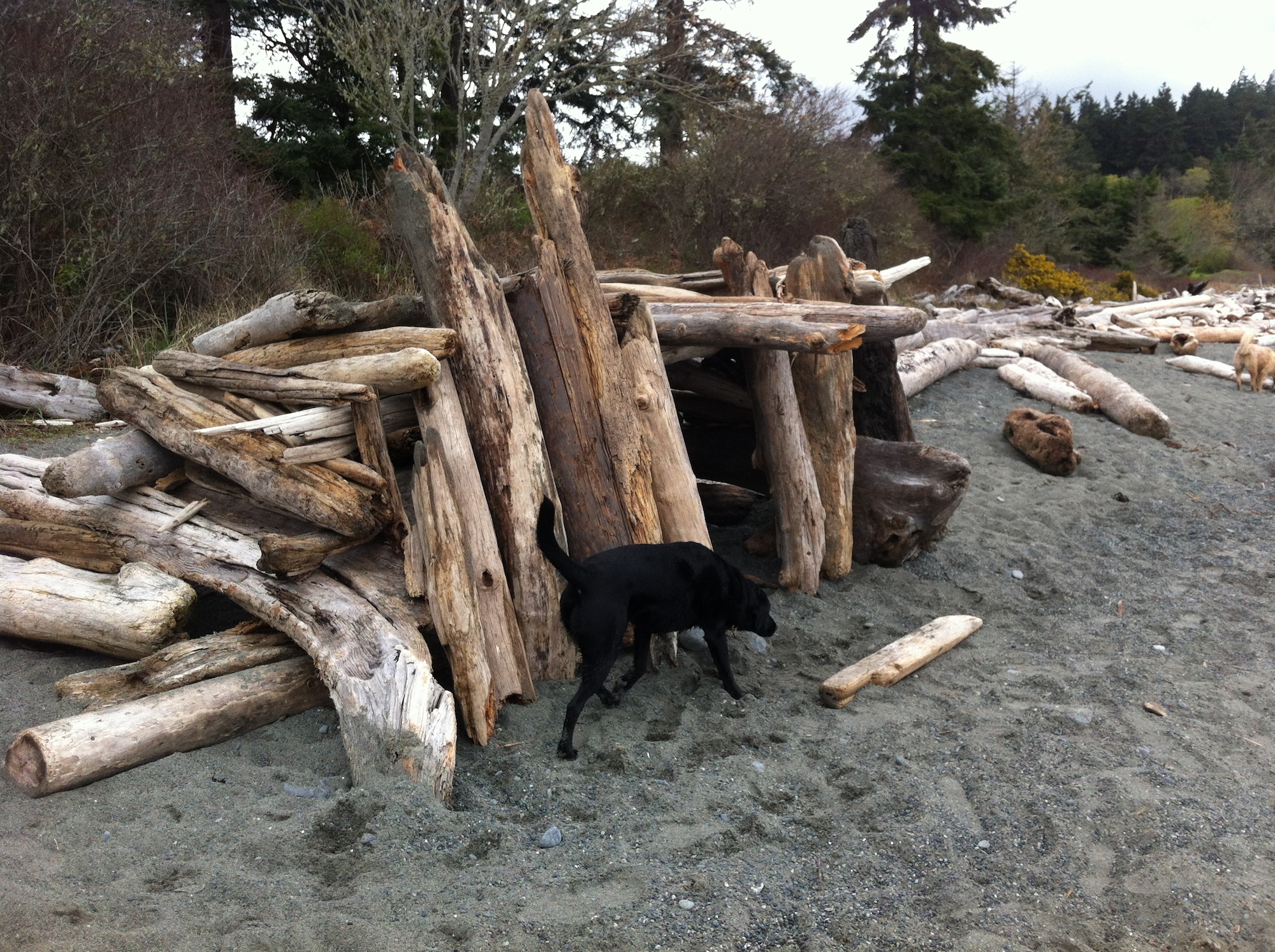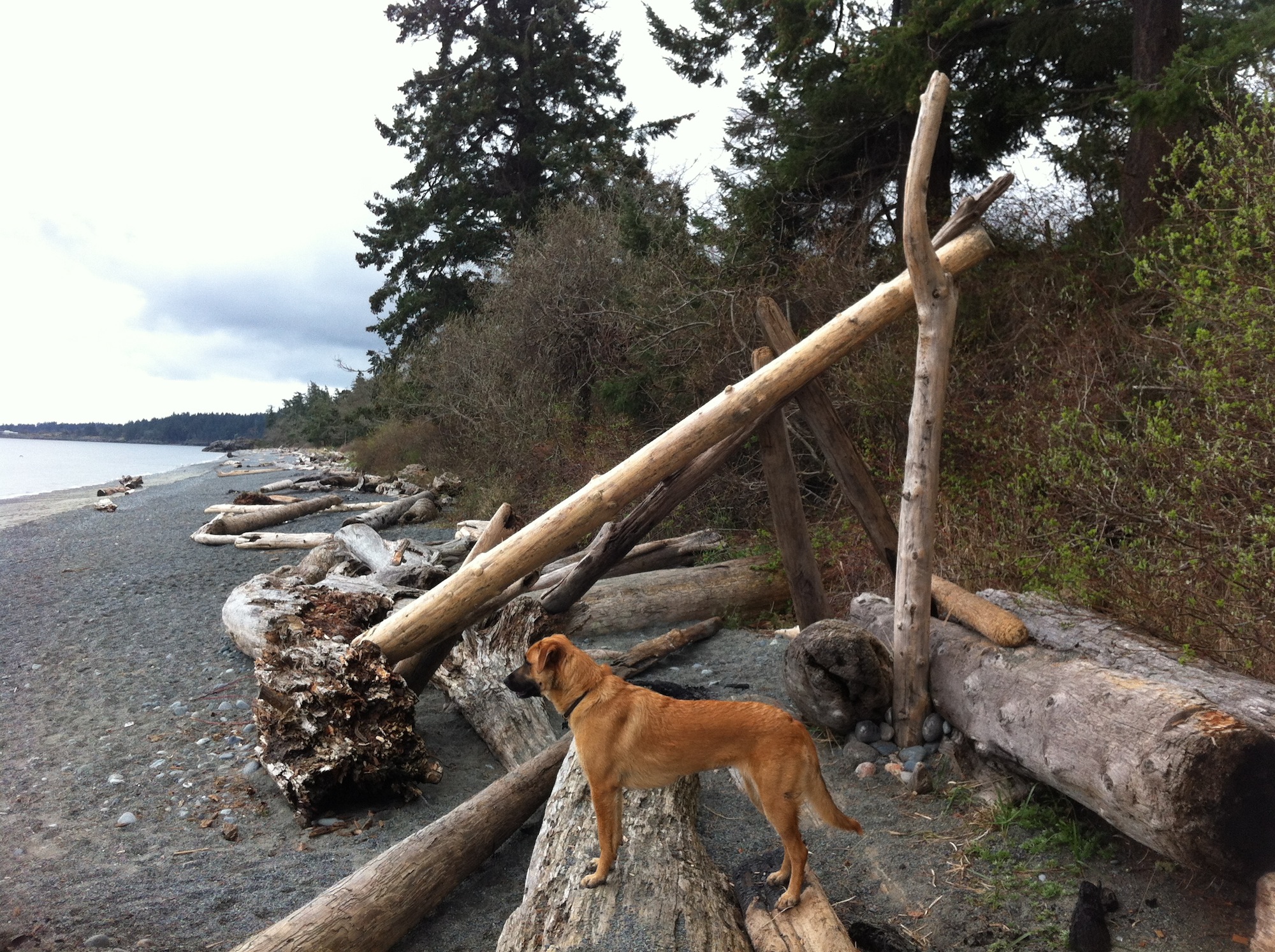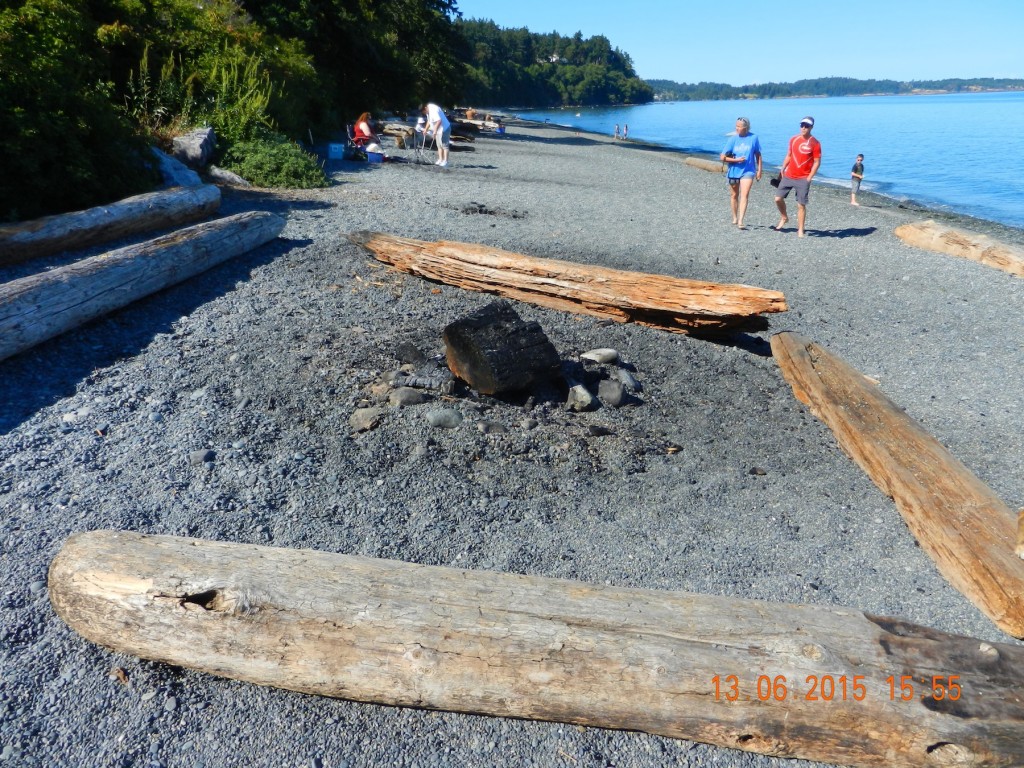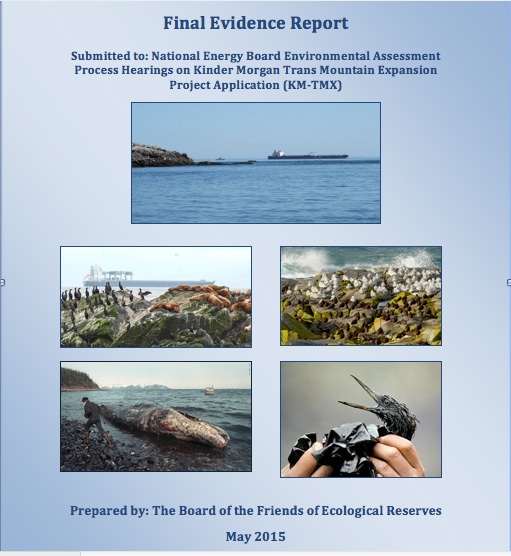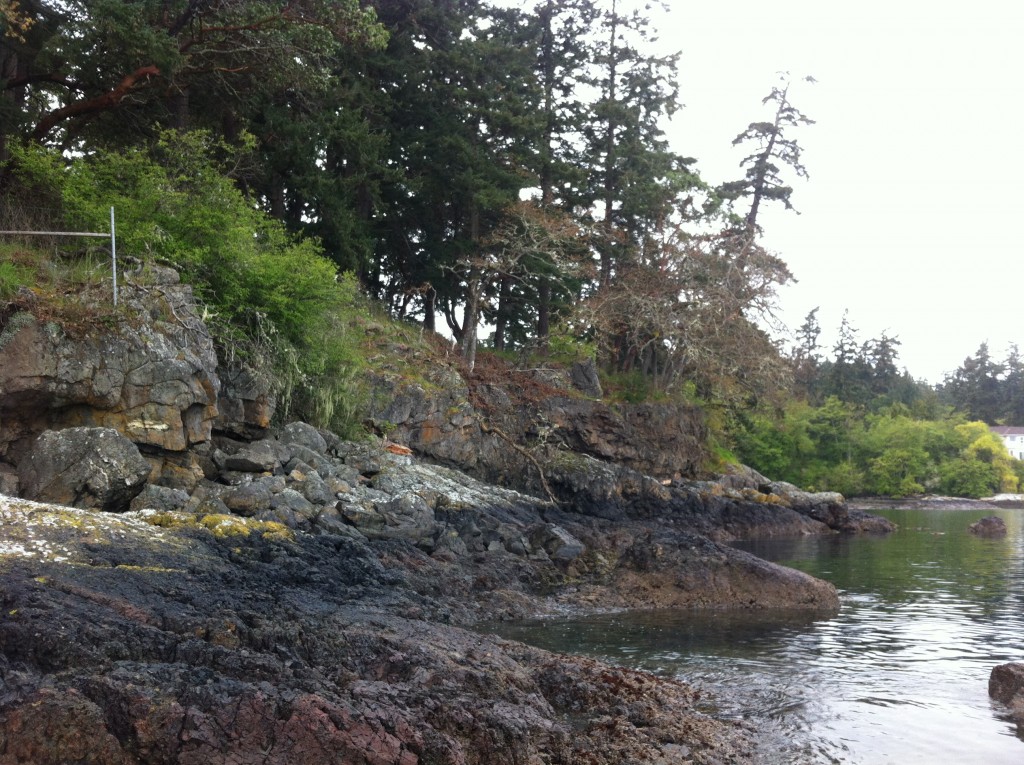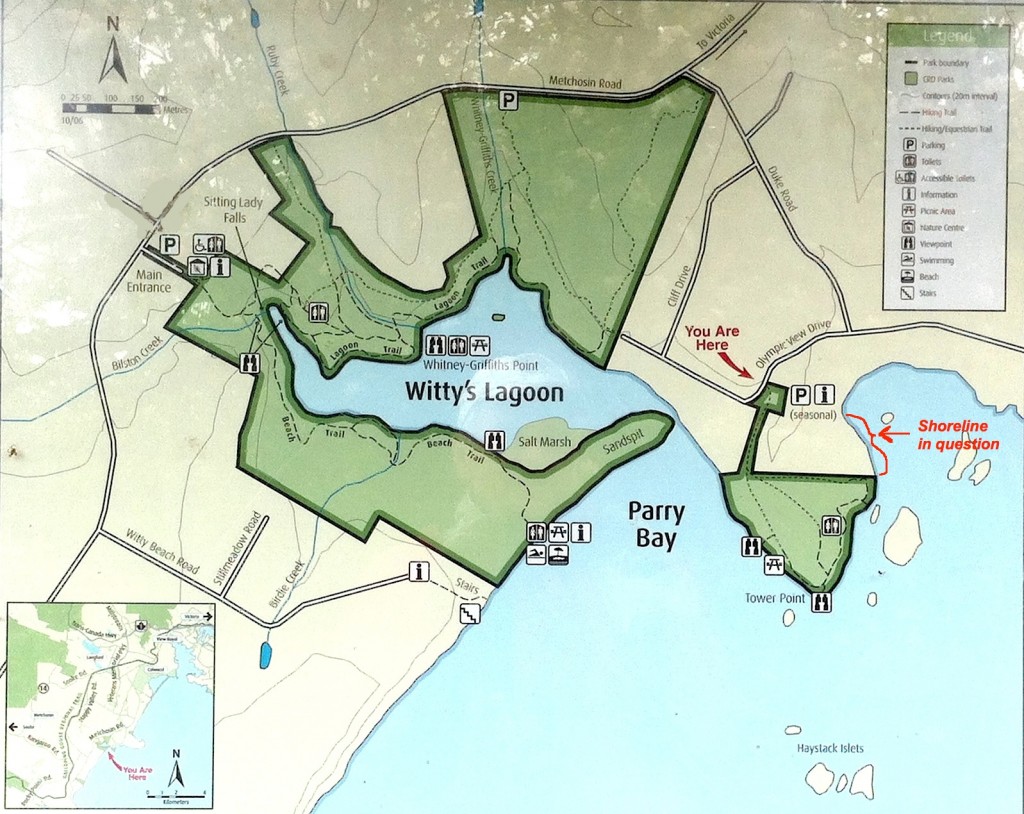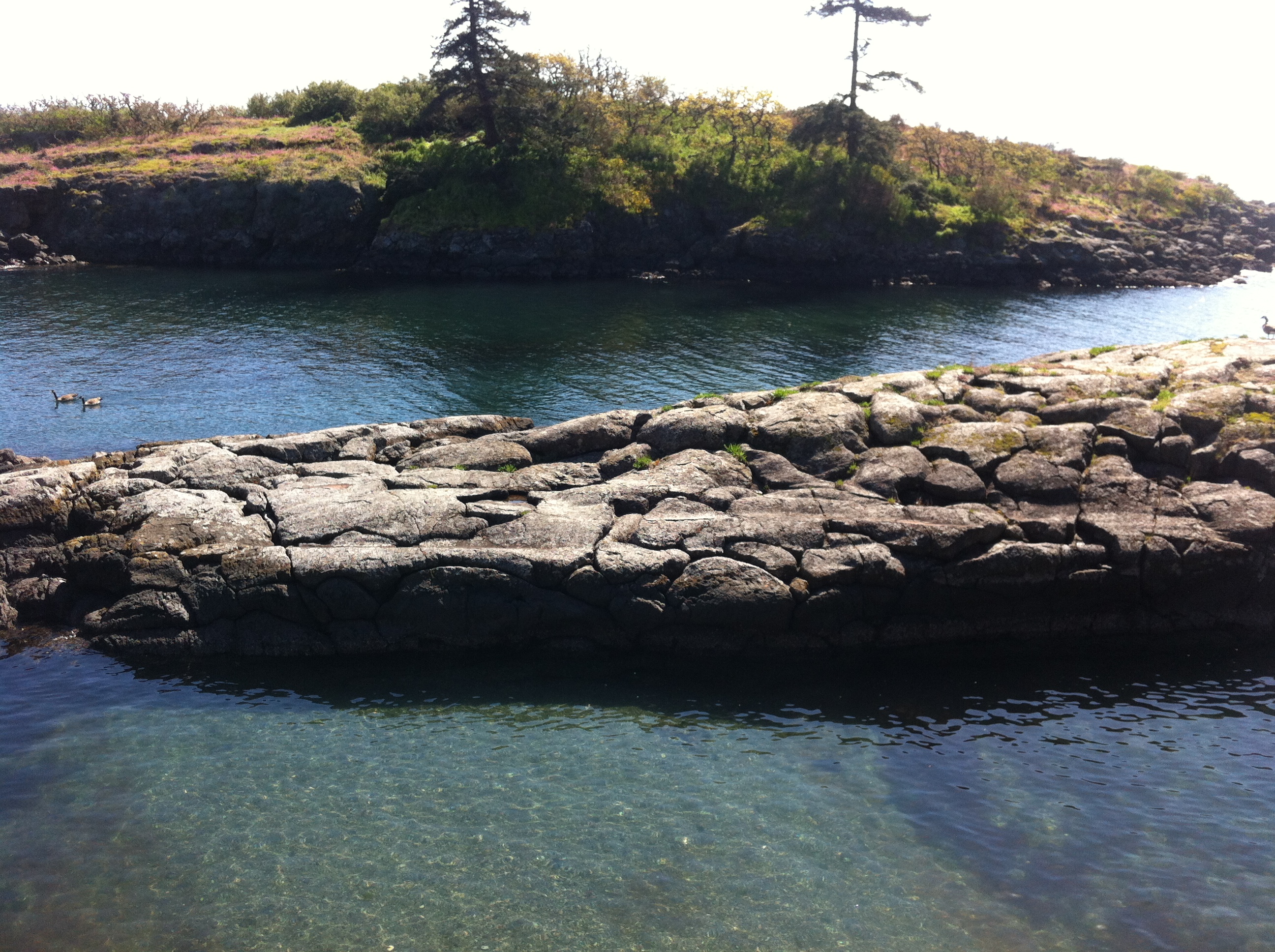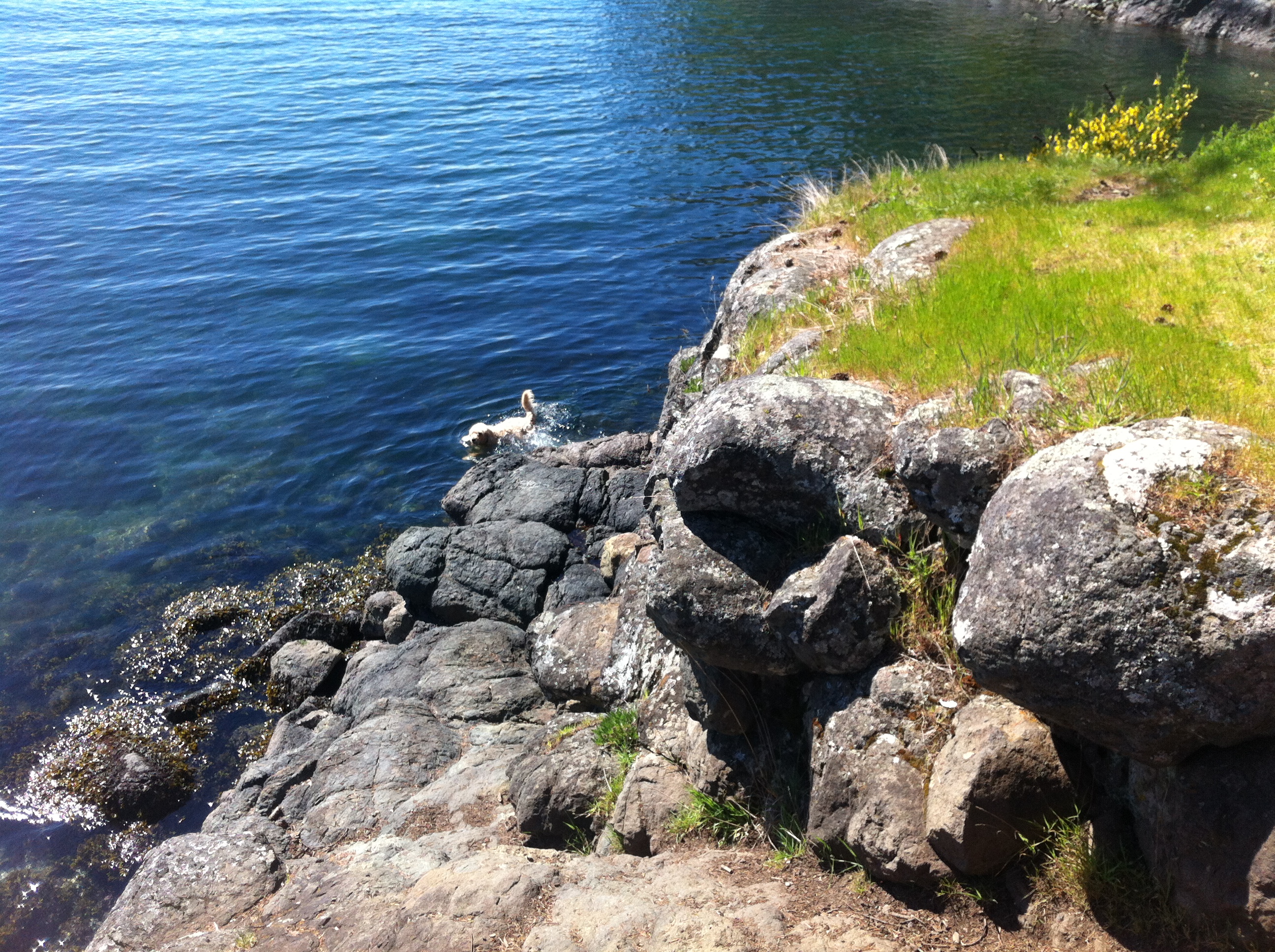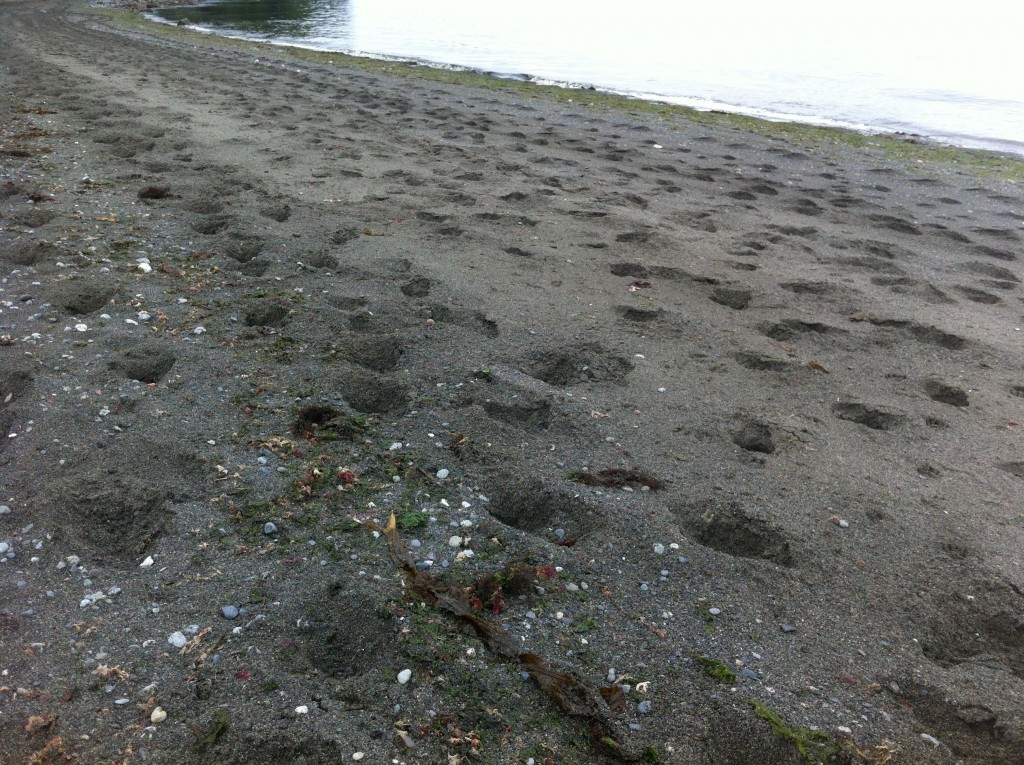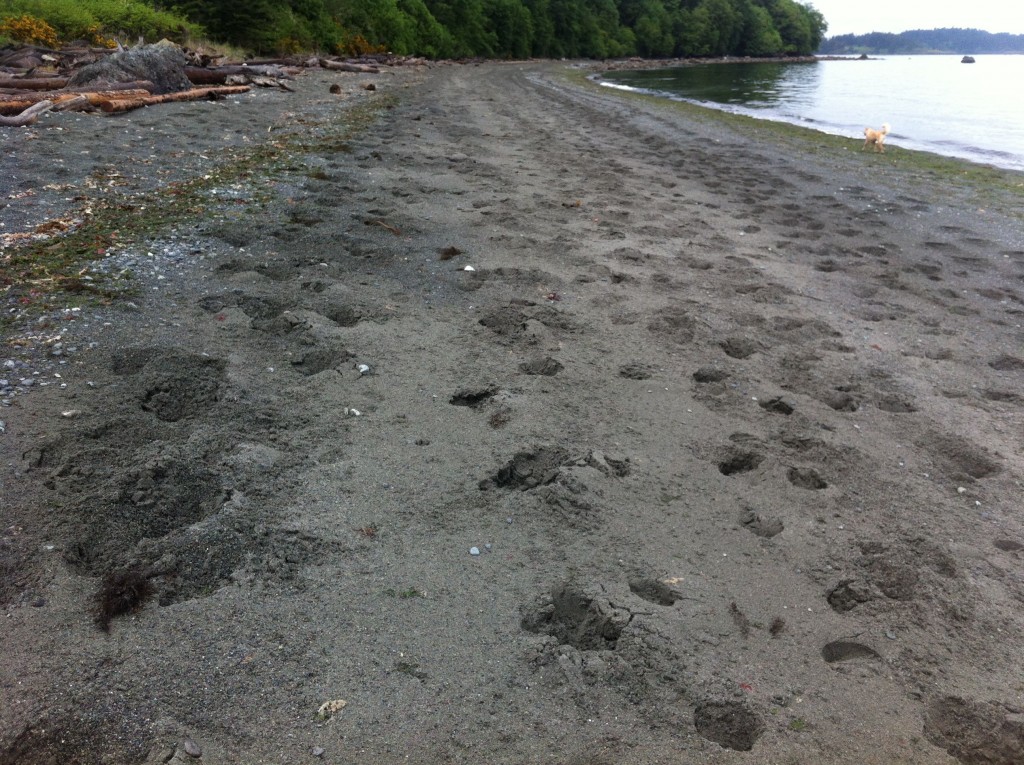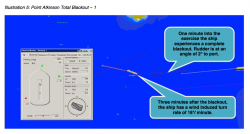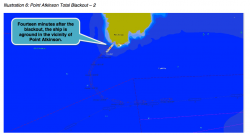A question for a physics student:
Why does the moon reflect in parallel lines over the ocean water rather than coming from narrow on the horizon to wide at the shore?
Category Archives: Human Impact on Shorelines
Six Problems with Beach Fires in Metchosin
It would be nice if we all were careful, cleaned up after ourselves and were considerate of others and the environment. Unfortunately the annual spring and early summer problem of Fires on Metchosin beaches provides much evidence to the contrary. Those of us who frequent the area have observed a deterioration in the situation in the last few years on Taylor and Weir’s beach. This spring with the stair access to Wittty’s lagoon cut off and the announcement on local media that beach fires are not allowed in other municipalities but it was still okay to have them in Metchosin, the problem has reached a tipping point.
Ed Note: Metchosin Council finally banned all beach fires in a meeting in mid-June this year.
1. THE PROBLEM OF THE BURNING OF PALETTES:
- partially used palettes–(nails and toxic wood)
- Palettes partially burnt in a beach fire
The above was just part of last weeks legacy on Taylor Beach:
A quick review of the internet points out that :
Many Pre-2005 pallets have been treated with Methyl Bromide prior to exporting (part of phytosanitary regulations before import/export shipping to reduce risk of importing wood diseases and pests from country to country). The Methyl Bromide treated pallets should be disposed of as hazardous waste since it is dangerous to both people and the environment. Newer pallets are heat treated, but don’t rule out mildicides ( for fungal inhibition) applied to some pallets.
2. THE BURNING BEACH DRIFTWOOD PROBLEM:
It saddens us to see people chopping or sawing up large logs or dragging them whole onto fires . These logs, some well over 50 years old provide habitat for beach creatures and being moveable, can absorb wave energy and help to stabilize the backshore from increasing erosion.
- We value old large logs on the beach as they provide wildlife habitat and a good buffer for storms.
- Salt-soaked wood will release toxic chemicals when burned
- The mess of partially burned wood is unsightly on an otherwise pristine beach.
Why do people continue to burn driftwood when there is clear evidence that it can produce toxic substances?
- Never burn household garbage or cardboard. Plastics, foam and the colored ink on magazines, boxes, and wrappers produce harmful chemicals when burned.
- Never burn coated, painted, or pressure-treated wood because it releases toxic chemicals when burned.
- Never burn ocean driftwood, plywood, particle board, or any wood with glue on or in it. They all release toxic chemicals when burned.
- Never burn wet, rotted, diseased, or moldy wood.
From:http://www.bcairquality.
” The driftwood found on B.C. beaches may seem like an economically attractive heat source. Driftwood, however, is laden with salt, and burning it releases sodium and chlorine ions. The potential exists for these chlorine ions to form chlorinated compounds such as dioxins and furans, which are suspected human carcinogens. They may also corrode your stove and venting system.”
3. THE “I’VE GOT TO HAVE MY OWN PIECE OF THE BEACH” PROBLEM: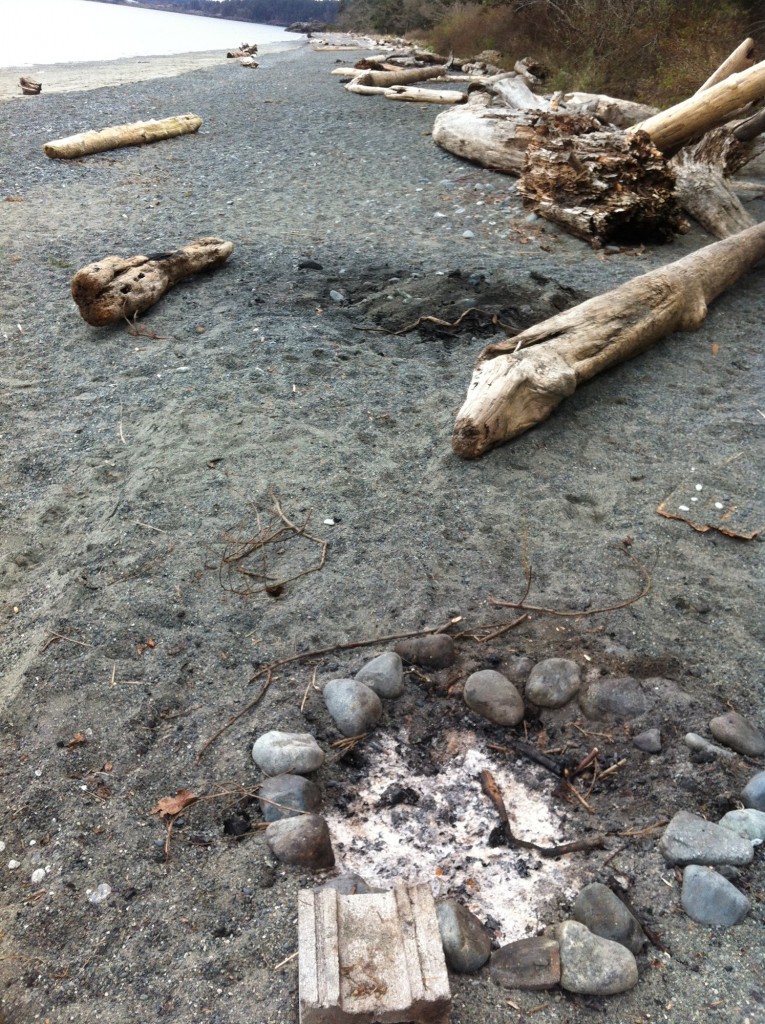
Why is it not okay to use someone’s old firepit instead of building a new one a few feet away, creating another mess?
Last week I counted 40 old and recent firepits from this season along a stretch of no more than 200 metres of Taylor Beach.
4. THE PROBLEM WITH THE MESS PEOPLE LEAVE:
Probably before the end of summer I will get a picture of the melted broken bottles and aluminum beer cans left in fire-pits, but for now this will have to do. The hazard this poses for children and animals is unacceptable. Winter storms will distribute any material left like in mounds and pits over the beach, posing an unsuspecting hazard.
- garbage left in the firepit.
- Unstable structures which could injure climbing children or dogs.
- Unstable structures possibly built as a wind shelter?
5. THE HABITAT DESTRUCTION PROBLEM:
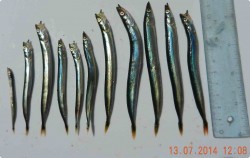 In the photo below, the darkened sand area, a diameter of around 4 metres or 12 feet , is where there will be complete sterilization of the sand and death of any organisms living within it. Sand is not an inert environment to begin with. It can have a complex ecosystem of bacteria and invertebrates which contribute to decomposition and nutrient cycling , as well as a habitat for forage fish.
In the photo below, the darkened sand area, a diameter of around 4 metres or 12 feet , is where there will be complete sterilization of the sand and death of any organisms living within it. Sand is not an inert environment to begin with. It can have a complex ecosystem of bacteria and invertebrates which contribute to decomposition and nutrient cycling , as well as a habitat for forage fish.
6. THE EXTREMELY DRY WEATHER AND WILDFIRE RISK PROBLEM:
Perhaps this is the biggest problem that threatens to have a huge impact on life in Metchosin. The continuity of dry brush and forest from the beaches to backyards is a real threat for wildfires. Fanned by winds, fires that escape or were not completely extinguished and left unattended could cause untold damage to residents and property in the district.
- Q: Are people entitled to build fires on the beach?
A: Yes, people have the right to build fires on the beach as long as they are in compliance with either their local government bylaws or the Wildfire Act & Regulations. If Campfires are restricted in this area, then a beach campfire fire is also prohibited. - Q: What are the rules that apply to having a campfire (a half a meter by a half a meter used for recreational or first nation’s ceremonial purposes)?
A: A person may light, fuel or use a Campfire when:
the person is not prohibited from doing so under another enactment;
to do so is safe and is likely to continue to be safe;
the person establishes a fuel break around the burn area; while the fire is burning, the person ensures that
the fuel break is maintained, and
the fire is watched and patrolled by a person to prevent the escape of fire and the person is equipped with at least o one fire fighting hand tool, or o 8 litres of water in one or more containers;
before leaving the area, the person ensures that the fire is extinguished. - Q: What are some safety guidelines when conducting a beach fire?
A: Ensure that you comply with regulations and/or bylaws in your area regarding fire size and safety measures. Always check whether there are any bans or restrictions in effect, and pay close attention to wind conditions before lighting a fire. Keep fires at a reasonable distance from flammable materials and never leave them unattended. As hot coals can easily reignite: use water to extinguish the fire and ensure that it is cold to the touch before leaving it unattended.Q: If a fire is started illegally, who is liable for the suppression costs it if it escapes?
A: If the fire is started within an organized area, costs are assumed by the fire department (local government) and area tax payers. If it is started outside of a fire department’s jurisdiction (crown land), the BC Forest Service responds and assumes costs. If the person who started the fire is caught and found to be in non-compliance with regulations, there are penalties that can be enforced, such as restorative justice, ticketing (fines), cost recovery, or criminal prosecution in serious cases.“Local governments have the power to set bylaws to control (back)yard burning, campfires and beach fires within their boundaries. A growing number of municipalities have passed their own bylaws that ban backyard burning and other kinds of burning. For more information on municipal burning bylaws, see Inventory of Air Quality Bylaws in British Columbia for Anti-Idling, Open Burning and Wood-Burning Appliances (PDF: 1017 KB/197 pages), and Review of Open Burning Bylaws on Vancouver Island (PDF: 150 KB/25 pages).”
Some other references :
District of Metchosin Burning Regulations:
Metchosin FIre Department Burning regulations:
Central Saanich Burning Regulations:
Saanich Beach Fire regulations:
Comox Valley Regional District:
Final Report of the Board of Friends of Ecological Reserve on the KM/TMX project
Herring Spawn Video from Denman Island
Why are BC residents so concerned about what might happen to their coastline from an increase in shipping and oil tankers?
We don’t have a scene like this video portrays in Metchosin, although we do get frenzy feeding by birds and mammals in the fall at Race Rocks but we do have forage fish which live on our beaches and provide year round food for the ecosystem.
Don’t miss this video from Denman Island : https://vimeo.com/121960894?
Tower Point Subdivision
Parkland Acquisition at Subdivision: Under section 941 of the Local Government ACT, the owner of land being subdivided must provide park land when three or more additional lots are being created and at least one of the parcels is 3 Hs(4.94 acres) or smaller. The amount of parkland that is required, without compensation, is 5% of the land being proposed for subdivision….where the local govenment has the authority to decides whether it wants 5% deducation or cash-in-lieu, it is up to Council (unless specifically delegated to the Approving Officer) to determine the amount (up to 5%) and location.
- Islands made of pillow lava right in front of this shoreline segment..
- evidence of pillow lava that formed this area at Tower Point.
I also took some pictures of the wildflowers and features of the shoreline in the park at Tower Point bordering this subdivision. See in the next blog.
Horses on Taylor Beach
The Metchosin Community has a considerable population of recreational horses. It is accepted that to criticize anything horse-related might not be politically correct in Metchosin.
The pictures included in this post represent an extreme example but they are useful in order to point out the potential environmental impact of this activity. Let alone making it  difficult to walk on until the next high tide comes in to smooth it out, the real issue is what is happening to the habitat of the forage fish. Both Pacific Smelt and Sand lance inhabit intertidal zones on Taylor beach. When they spawn, these forage fish deposit eggs just under the surface of the sand . They are vulnerable to compaction and excessive drying out before they are carried out by the tide. Given the lack of protection afforded the habitat of these fish and the over-harvesting in the herring fishery, these essential small fish of the food web are challenged enough already.
difficult to walk on until the next high tide comes in to smooth it out, the real issue is what is happening to the habitat of the forage fish. Both Pacific Smelt and Sand lance inhabit intertidal zones on Taylor beach. When they spawn, these forage fish deposit eggs just under the surface of the sand . They are vulnerable to compaction and excessive drying out before they are carried out by the tide. Given the lack of protection afforded the habitat of these fish and the over-harvesting in the herring fishery, these essential small fish of the food web are challenged enough already.
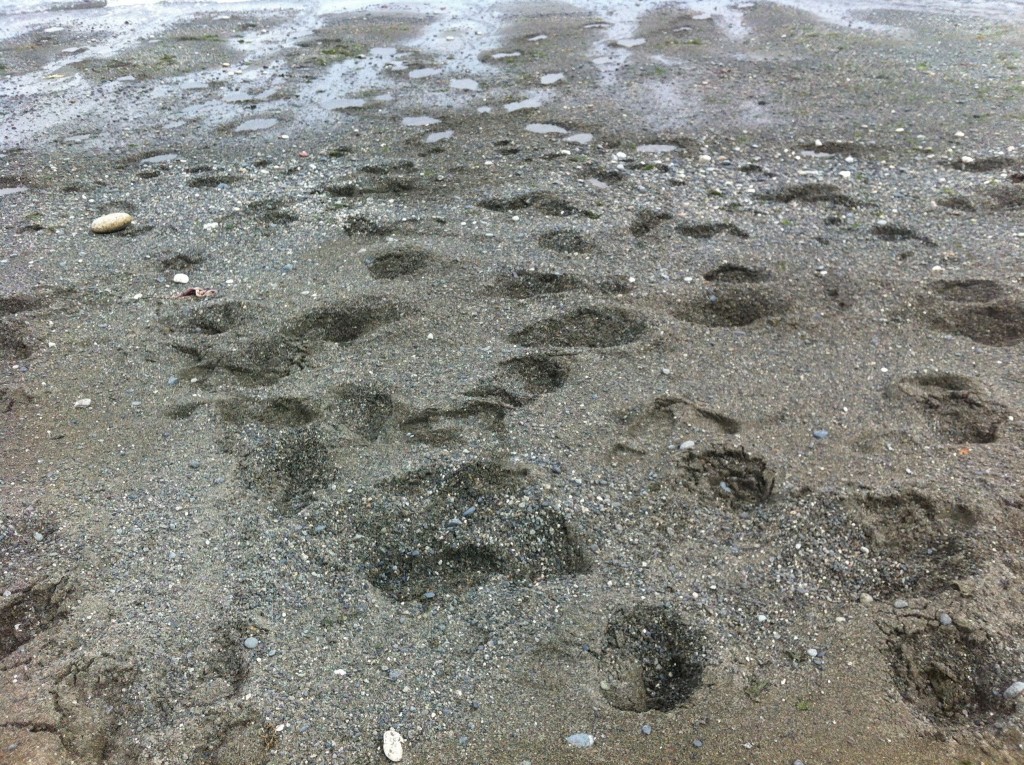
Horse hoof punctures in the sand right down in the area where sand lance are depositing their eggs in burrows.
Winter foraging seabirds still off Taylor Beach
On my daily walks on Taylor Beach since the fall, I have noticed that there has been a constant presence of the diving ducks off shore which rely on the forage fish from Taylor Beach. It will be interesting to see when they depart to go to their nesting grounds, usually to the North on Inland lakes.
Today a common loon, several red-breasted mergansers, buffleheads and surf scoters are still scattered over the waterfront.
No estimate is available on the number of diving birds that winter along the waterfront around the southern end of Vancouver Island depending on forage fish for survival but the sum total would probably be considerable given what we are regularly seeing in this area off Taylor Beach. In our efforts as intervenors on behalf of Friends of Ecological reserves, we have been aware and questioned the importance of the over-wintering population of seabirds in the area which would be severely affected in the event of a catastrophic oil spill. Unfortunately the level of environmental impact assessment by the pipeline and oil transport company in this area which is a few miles from the intended vessel traffic lane does not exist.
In our recent Round 2 intormation requests , we tried to get KM/ Trans Mountain to acknowledge the importance of modelling a spill of their toxic diluted bitumin off Victoria. They have refused to do so so far .
SInce Taylor beach is a spawning beach for two forage fish, Pacific Smelt and sand lance which provide food for these marine birds, one might reflect on the way we humans use and abuse the beach, the habitat of the forage fish. Numerous randomly placed beach fires and horse traffic which punches up the beach are concerns which should be addressed in Metchosin .
Bitumen spill effects on waterways, oceans unknown, draft federal report says
Exerpts below:
“Critics say the federal government has been trying to hide legitimate concerns about the consequences of oilsands pipelines by keeping a report under wraps on the possible environmental threats posed.
—“If this report has been around since 2013 and not been released, then it makes me think they must be trying to hide something.”
—Francois Poirier, president of TransCanada’s Energy East pipeline project, downplayed such concerns.
–Toxicology research ‘lacking’
—“In particular, research on the toxicology of bitumen is lacking,” says the draft report, which was commissioned in response to concerns raised at the Northern Gateway pipeline hearings.
“—-An early draft of the report lays out 10 specific “knowledge gaps” about bitumen and various substances used to dilute it when it’s pumped through pipelines.”
—“Very little information is available on the physical and chemical characteristics of oilsands-related products following a spill into water,” it says. “Research on the biological effects of oilsands-related products on aquatic organisms is lacking.”
—“A better understanding of the fate and behaviour of these products is critical for assessing the potential risk to aquatic organisms.”
Information Requests from the Board of Friends of Ecological Reserves submitted to Kinder Morgan on Jan 15
On January 15, 2014, The Board of Friends of Ecological reserves submitted the round 2 set of Information Requests to Kinder Morgan /TMX project . Since it has some questions related to local sensitive marine ecological areas, It is posted here:
C33-4-1_-_Information_Request_No._2_-_A4G5Q9
Other posts on our concerns about the risk of oil spills on Metchosin’s Coastline may be found here:
50 other intervenors in the NEB hearings also submitted questions.. The link to these will be added here when the National Energy Board puts up a link.
Trans Mountain Analysis of Tanker /Tugs
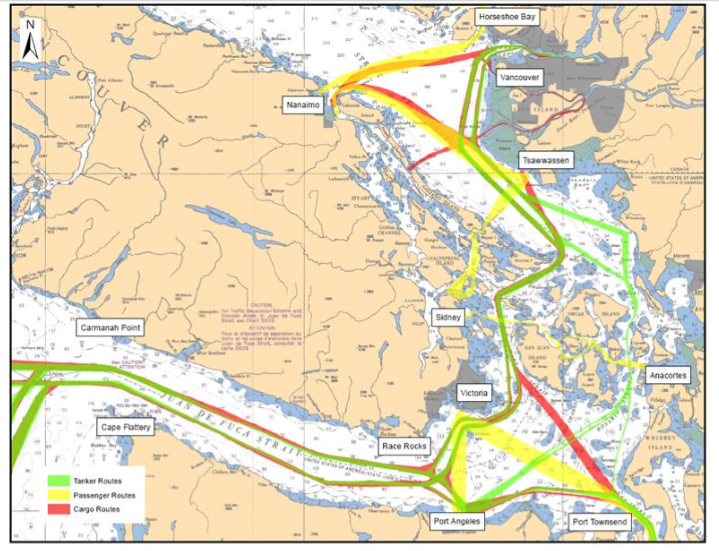
Trans mountain projection of Vessel traffic lanes in the Strait of Georgia and Strait of Juan de Fuca.
Recently, Trans Mountain released a Response to the National Energy Board Information Request , TERMPOL Report and Outstanding Filings from the National Energy Board:
(Def: TRC= TERMPOL Review Committee )
Below are some notes on this document:
Page 4 of 26
Recommendation 8: Trans Mountain should develop a tug matrix identifying appropriate tug specifications for untethered tug escort of Project tankers for the Strait of Georgia in consultation with the Pacific Pilotage Authority, BC Coast Pilots, and Transport Canada.
As described in response to NEB IR No. 1.59a (A3W9H8), Trans Mountain will make it a requirement of acceptance for tankers nominated to load at Westridge to have a suitable arrangement for the proposed enhanced tug escort. Trans Mountain will develop a tug matrix for inclusion as part of its Tanker Acceptance Standard to prescribe minimum tug capabilities required upon departure of the tanker. The tug matrix will define the capabilities and number of tugs required for foreseeable meteorological and ocean conditions and based on tanker and cargo size. The tug matrix will be developed by a qualified third-party consultant, in conjunction with the tug operators and regulatory authorities.
Page 5 of 26 Recommendation 9: Trans Mountain should implement extended untethered escort for outbound laden Project tankers through the Juan de Fuca Strait. (3.2.4 Proposed Risk Mitigation Measures)
TM Remarks,Comments, Actions:
As described in response to NEB IR No. 1.59a (A3W9H8), Trans Mountain will make it a requirement of acceptance for tankers nominated to load at the Westridge Marine Terminal to have a suitable arrangement for the proposed enhanced tug escort during its outbound transit through the Juan de Fuca Strait in accordance with the tug matrix developed in Recommendation 8. Tankers that do not commit to tug escort in the Juan de Fuca Strait during their laden passage shall be denied their approval to load at the Westridge Marine Terminal.
Recommendation 10: Should Trans Mountain revise its tanker acceptance process to require untethered tug escort of Project tankers through the Juan de Fuca Strait, it should develop a tug matrix identifying appropriate tug specifications in consultation with the Pacific Pilotage Authority and Transport Canada.
Response:Agreed. Please see comments above regarding Recommendation 8
Page 10 of 26
Finding 18: The TRC supports extending the pilot disembarkation zone and tethered tug escort requirements for Project tankers to an area in the vicinity of Race Rocks, weather permitting and subject to the requirements identified in a Pacific Pilotage Authority ‘Notice to Industry’. (3.2.4 Proposed Risk Mitigation Measures)
Accepted.
Trans Mountain is pleased with the TRC’s support for extending the pilot disembarkation zone and tethered tug escort requirements for Project tankers to an area in the vicinity of Race Rocks, weather permitting and subject to the requirements identified in a future Pacific Pilotage Authority ‘Notice to Industry’.
Page 16 of 26
c) TERMPOL Submission
In its Application Trans Mountain had included information from the quantitative risk assessment carried out by DNV, which was also submitted to TERMPOL for the committee’s review. Volume 8C, TERMPOL 3.15 (General Risk Analysis and Intended Methods of Reducing Risks, Trans Mountain Expansion Project, A3S5F4, A3S5F6, A3S5F8).
While the TERMPOL submission had proposed a number of enhanced laden tanker risk reduction measures for consideration (TERMPOL 3.15, Chapter 7), only two in-transit measures were included in the detailed quantification of probabilities (TERMPOL 3.15, Chapter 10), these were: · Extending tug escort for the laden tanker to areas of the route that currently do not require such escort (TERMPOL 3.15, Chapter 7.3.1); · Implementing a laden tanker Moving Exclusion Zone (MEZ) (TERMPOL 3.15, Chapter 7.3.2). Comparison of oil spill probabilities utilized a comparison of three primary scenarios of traffic and enhanced risk reduction measures. These were: Case 0: Forecast traffic in 2018 without TMEP (60 Trans Mountain tankers)
Case 1: Forecast traffic in 2018 with TMEP (408 Trans Mountain tankers)
Case 1b: Same as Case 1 but with expanded tug escort and moving exclusion zone for loaded Trans Mountain tankers.
TERMPOL Review Committee Report
The MEZ was intended as a means to further reduce collision probability through enhanced situational awareness of both the tanker and surrounding vessels. The TRC did not endorse the MEZ concept in the manner proposed in the TERMPOL submission because the TRC has determined that current regulations including ColRegs, Pilotage, and VTS are adequate and no further regulatory change was necessary to accommodate the Project.
In its report the TERMPOL Review Committee endorsed the following enhanced risk control recommendations for in-transit laden tankers: Extended use of tethered and untethered tug escort; as shown in figures 1 and 2 below.
(Recommendations 8, 9, 10 and Finding 17); · Extension of the pilot disembarkation zone (Finding 18);
Page 17 of 26
Refinements from First Round IRs
In response to intervenor requests in the first round of IRs, further assessment of risk and risk controls was conducted resulting in the refinement of the values presented in the TERMPOL submission. Specifically these IR responses were: Research by DNV into the area VTS (Evaluation of VTS Capabilities for TERMPOL 3.15,
Trans Mountain Pipeline ULC, 15 August 2014) determined that VTS capability was far more than what had been modeled. (A4A2Z7, A4A2Z8)
· Fast time simulation study of tanker drift in Juan de Fuca Strait (Maneuvering Assessment – Juan de Fuca Strait Proposed Tug Escort). (A4A7R1)
Strait of Georgia proposed tug escort simulation study (Lantec, 2014). This and the previous study were carried out and provided to the TRC upon their request.
· Detailed assessment of collision risk in Segment 2 (Burrard Inlet); see response to PMV IR No. 1.8.1 (A3X6V4).
· Upgraded the bollard pull of tugs used in the model (40 tonnes to 70 tonnes), which better reflects the tugs available in the region for escorting laden tankers as shown in Page 19 of 26:
Thus the fundamental conclusion submitted in the Application does not change; that is, that the existing marine network is well managed and safe and has the capacity to safely accommodate Project tankers with application of agreed risk mitigation measures and that oil cargo spill risk in the region will remain similar and comparable with current conditions.
Page 22 of 26
statement after the two pink maps:
References:
The Effect of Enhanced Situational Awareness on Collision Risk, Technical Note, November 2014 (DNV GL).
Strait of Georgia Proposed Tug Escort Simulation Study (Lantec, 2014)

